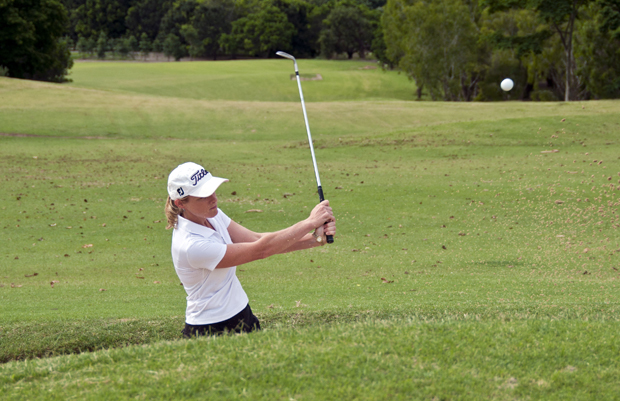4 Steps To Better Bunker Play
If you struggle to get your ball out of the bunker and you find yourself playing around with your technique. Try these 4 tips:
- Hinge and turn –swing the club head not the grip, hinge the club head to the sky with sufficient turn of your chest and arms in your backswing.
- Angle of attack – set your weight on your front leg and keep it there for the duration of the swing, hinge the club head.
- Maintain the loft – once you set the loft, maintain it.
- Rotate forward – big finish, you need to create speed, splash the sand out of the bunker onto the putting surface. If you can move the sand a long distance then you should be able to get the ball out.
Bunker shots require a free swing of the club head not the arms. Swinging the grip more than the club head will result in the player pulling hard with the arms in the downswing to create any sort of club head speed. Hinge the club head, turn the body and rotate forward into a full finish position will give you the best chance to get the ball out of the bunker.
Try and avoid setting up with an open stance. Play with a more neutral set up with the ball position just left of the middle. Set up with your weight left and your shoulders reasonably level like the pitch shot. One of the most essential aspects to train is your contact point in the sand. Your divot should be long and shallow and should enter the sand at the same point every time, generally in the middle of your stance.
To control distance on your bunker shots, control the length of your follow through. If you are required to hit a long bunker shot an option is to change clubs. Try a 9 iron and open the face, it has bounce like a sand wedge, but will carry and release father.
Bounce – What is it?
Bounce is the angle of the sole of the club that hangs below the leading edge of the wedge.
If you look at the bottom of your sand wedge, you will see some extra tilting down and away from the leading edge of the front of the club face. The bottom of the club is shaped differently to help it glide through the turf or sand without digging in too deeply. The back edge of the sand wedge is the bounce, striking the turf or sand first so that the club skips instead of digging in.

